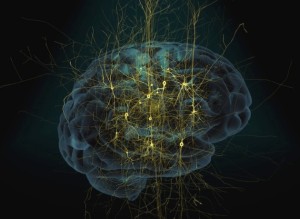
The ability to study brain processes in real time is one of the goals of the
Human Brain Project’s newly-released computing tools
6 April 2016 – Unfortunately, due to time constraints, one thing I have not been able to become involved with in my neuroscience program is Europe’s major brain-research project, the Human Brain Project (HBP). But I have followed it albeit from afar.
HBP has unveiled a set of prototype computing tools and called on the global neuroscience community to start using them. The move marks the end of the 30-month ramp-up phase and the start of its operational phase.
The release of the computing platforms — which include brain-simulation tools, visualization software and a pair of remotely accessible supercomputers to study brain processes in real time — could help to allay concerns about the €1-billion (US$1.1-billion) project’s benefits to the wider scientific community. From Katrin Amunts, a neuroscientist at the Jülich Research Centre in Germany and a member of the project’s board of directors, at a press conference on 30 March:
“The new platforms open countless new possibilities to analyse the human brain. We are proud to offer the global brain community a chance to participate.”
But it is not clear how the platforms — some freely accessible, others available only on the success of a peer-reviewed application — will resonate with brain researchers outside the project. At this point, no one can say whether or not the research platforms will be a success.
Brain simulation
The general mission of the HBP is to gather and combine neuroscience data of different types to reconstruct the human brain computationally at different scales, from the inside of brain cells to the entire functioning brain, and also to simulate it.
Since the project launched in 2013, 800 scientists from 24 countries have been involved in developing tools to facilitate collaborative research for the general neuroscience community. The tools fall into in six areas: neuroinformatics, brain simulation, medical informatics, high-performance analytics and computing, neurorobotics and brain-inspired ‘neuromorphic’ computing.
But the project has attracted great controversy. Many in the greater neuroscience community complained that the management had exaggerated what the project’s computing platforms would be able to do. In 2014, around 150 of them signed a petition claiming that the project was being mismanaged and running off its scientific course and pledged to boycott the HBP unless their concerns were addressed. (The petition has since accumulated more than 800 signatures).
An independent review completed in March 2015 confirmed these concerns and recommended management changes. It stressed that the computing infrastructure created by the HBP must be useful to the wider scientific community. The European Commission, which bankrolls much of the project, adopted the recommendations.
Data dream
The release of the neuroscience tools is a sign that the HBP’s leadership accepts that the project needs to focus on providing concrete services from which the neuroscience community at large can profit. But many caution that the project still depends on “logical flaws”, such as “the dream” that sparse recordings from neurons can generate dense data.
Scientists will also need some time to learn to use the tools, says Karlheinz Meier, co-leader of the HBP’s neuromorphic-computing platform, which is based in Manchester, UK, and Heidelberg, Germany. “I trust that many useful applications will then start to emerge”.
The platforms are to be developed with a view to eventually becoming a permanent, pan-European research infrastructure, said Philippe Gillet, head of project coordination for the HBP at the Swiss Federal Institute of Technology in Lausanne and a member of the project’s board of directors, during the press conference. One example of such an infrastructure is the European Biobanking and Biomolecular Resources Research Infrastructure, a distributed network of centres that give researchers access to biological samples and corresponding data. However, for the HBP to reach this stage would require a commitment from governments to fund the project permanently.